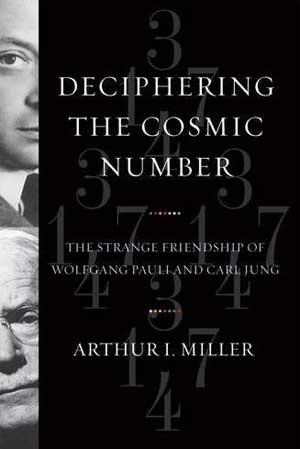The two shared similar obsessions. Both were scientists, but each feared that physics would always be missing something if it neglected the inner workings of the mind.
Jung obsessed over mental archetypes - primitive, subconscious symbols hard-wired into our perception of the world - and was fascinated by the Kabbalah, a fiendishly complex branch of Jewish mysticism.
Pauli, for his part, was enamoured by Johannes Kepler, who tried (unsuccessfully) to explain the structure of the solar system in terms of geometry alone. He was also intrigued by a lesser known contemporary of Kepler - Robert Fludd, a member of the Rosicrucian secret society, who believed that simple geometrical forms held the key to unlocking the cosmos. As Pauli struggled with problems in quantum physics, Miller explains, he felt "the need for a fusion of physics with Jung's analytical psychology in order to understand first the unconscious and then the conscious".
Pauli began experiencing bizarre dreams and turned to Jung for help in making sense of them. The dreams featured a startling mix of geometrical figures, motifs from physics (clocks and pendulums) and mysterious figures reminiscent of Jung's archetypes (the serpent eating its tail, a veiled woman and an ape-man, to name a few). Although Pauli described 400 dreams to Jung, these visits were kept a secret; when Jung wrote about them, he referred to his famous patient only as a "great scientist".

Why 137? Pauli obsessed over it, and he wasn't the only great physicist to do so: Arthur Eddington, Enrico Fermi and Richard Feynman all took stabs at it over the years. Meanwhile Jung, with his knowledge of Kabbalah, also found enormous significance in 137. Every letter in the Hebrew alphabet has a number associated with it, and - lo and behold - the letters in the word "Kabbalah" add up to 137. Remarkable - or a meaningless coincidence.
The history is fascinating, as are the insights into the personalities of these great thinkers. Miller, however, seems oddly accepting of Pauli and Jung's musings, which these days we would label pseudoscience. And Miller's thesis that their ideas are bearing fruit today, with the study of consciousness "a burgeoning field of research using concepts from quantum mechanics", is somewhat exaggerated.
Book information
Deciphering the Cosmic Number: The strange friendship of Wolfgang Pauli and Carl Jung by Arthur I. Miller
Published by: W. W. Norton (published in the UK in June)




This is what Jung said, in part:
Since the remotest times men have used number to establish meaningful coincidences, that is, coincidences that can be interpreted.
There is something peculiar, one might even say mysterious about numbers. They have never been entirely robbed of their numinous aura. If, so a textbook of mathematics tell us, a group of objects is deprived of every single one of its properties or
The sequence of natural numbers turns out to be unexpectedly more than a mere stringing together of identical units; it contains the whole of mathematics and everything yet to be discovered in this field.
Number, therefore, is in one sense an unpredictable entity.
It is generally believed that numbers were invented, or thought out by man, and are therefore nothing but concepts of quantities containing nothing that was not previously put into them by the human intellect. But it is equally possible that numbers were found or discovered.. In that case they are not only concepts but something more-autonomous entities which somehow contain more than just quantities.
Unlike concepts, they are based not on any conditions but on the quality of being themselves, on a "so-ness" that cannot be expressed by an intellectual concept.
Under these conditions they might easily be endowed with qualities that have still to be discovered.
I must confess that I incline to the view that numbers were as much found as invented, and that in consequence they possess a relative autonomy analogous to that of the archetypes.
They would then have in common with the latter, the quality of being pre-existent to consciousness, and hence, on occasion, of conditioning it, rather than being conditioned by it.
see google search:
Kochab 1080
"numomathematics"
New York